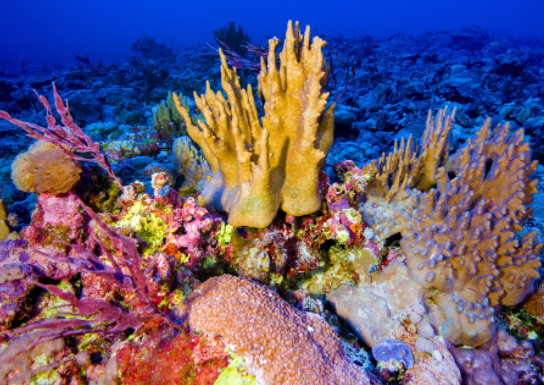Text by Henrylito D. Tacio
Photo courtesy of Department of Agriculture
Originally, it was called Benham Rise. Presumably, it was named after Admiral Andrew Ellicot Kennedy Benham (1832-1905), an American navy officer who served with both the South Atlantic and West Gulf Blockading Squadrons during the American Civil War.
Although it is near the country (approximately 250 kilometers east of the northern coastline of Dinapigue, Isabela), the 13-million-hectare underwater plateau was not included in the territory of the Philippines. It wasn’t until on April 8, 2009, that the government lodged a partial territorial waters claim with the United Nations Commission on the Limits of the Continental Shelf.
A bill filed by then-Senator Miriam Defensor-Santiago was enacted by Congress and became Republic Act No. 9522, or the Archipelagic Baselines Law, which became the basis of the claim.
In 2008, the Philippines filed its claim for Benham Rise in compliance with the requirements of the United Nations Convention on the Law of the Seas. “The UN officially approved the claim in April 2012, the first claim of the Philippines approved by an international body since the colonial era,” Wikipedia says.
Today, it is called Philippine Rise. On why it was changed, Wikipedia reports: “After Chinese survey ships were spotted in the region in 2017, President Rodrigo R. Duterte suggested that the plateau be renamed to emphasize the Philippines’ sovereignty over the area. Soon after, the Department of Foreign Affairs announced plans to come up with a new name. In May 2017, the Philippine government officially adopted the name ‘Philippine Rise’ for the feature and designated the areas as a ‘protected food supply exclusive zone’ and prohibited mining and oil exploration in the Philippine Plateau.”
To enhance the protection and sustain the near-pristine condition of the Philippine Rise, a $4-million project is being designed by the Department of Environment and Natural Resources (DENR) and Conservation International (CI).
The proposed five-year project, titled Philippine Rise Integrated Conservation for Enduring Legacies through Ecosystem Support Services (PRICELESS), will be financed under the 7th Replenishment Cycle of the Global Environment Facility (GEF-7). It will be executed by the DENR in partnership with non-government organizations, namely Conservation International and Rare Philippines.
GEF-7 will provide a $4 million grant, with an expected co-financing from the government, conservation partners, and other key stakeholders in the Philippine Rise Region.
According to the press statement, GEF-7 PRICELESS aims to address the need to ramp up and build capacity to protect and manage the waters, reefs, and natural resources in the Philippine Rise Marine Resource Reserve (PRMRR).
The PRMRR is composed of the Benham Bank and its surrounding waters, being the first National Integrated Protected Areas System Marine Protected Area (NIPAS MPA) in the country’s Exclusive Economic Zone (EEZ).
A “natural submarine prolongation” of the Luzon island is how the area has been called. It is described as “3,000 meters to 3,500 meters below sea level, except for the Benham Bank, which is 48 meters to 70 meters below sea level.”
The Benham Bank – the shallowest point of the Philippine Rise – exhibits rich marine biodiversity. Its reef scapes contain ecologically fragile corals, exotic algae, varied sponges, and Halimedia, which sustain a variety of fish.
The PRMRR was declared as an Ecologically and Biologically Significant Area (EBSA) by the Convention on Biological Diversity (CBD) back in 2016, granting the area the international recognition it deserves.
The CBD website states: “In terms of associated fish fauna, the area contains 60 bony fish species and three cartilaginous species. Despite the depth, the majority (13 families) of the reef fishes are commercially important food fish: snappers (maya-maya), emperors (bisugo), groupers (lapu-lapu), trevallies (talakitok), and surgeonfishes (labahita). The area also exhibits a high diversity of butterfly fishes with 9 species per unit area of reef.”
However, it is through the issuance of Presidential Proclamation No. 489 in 2018 that PRMMR is being managed and operated. The DENR has initiated that the PRMRR be declared a full-fledged NIPAS Marine Protected Area.
In Benham Rise Region in the Philippines: Protecting its Role in Providing Ecosystem Services, fisheries expert Dr. Jose Ingles argued that biodiversity conservation and the protection of Philippine Rise be initiated as these are “critical to the country and the future of oceanic tuna stocks regionally.”
Philippine Rise is a haven for the Pacific bluefin tuna (Thunnus Orientalis) and the big eye tuna (Thunnus obesus), both classified as “vulnerable” by the International Union for Conservation of Nature Red List of Threatened Species.
A report from the Philippine News Agency stated that Philippine Rise is “an important fishing ground for tuna fishermen from Infanta and Real in Quezon; Baler, Aurora; Catanduanes; and other adjacent provinces along the northern tip of the Philippines.”

